AZ-400: Designing and Implementing Microsoft DevOps Solutions
Analyze Metrics
Analyze metrics by using collected telemetry including usage and application performance
In this guide, you’ll learn how to collect, monitor, and analyze telemetry data in Azure to gain actionable insights into application usage and performance. Whether you’re preparing for the AZ-400 certification or refining your Azure DevOps practices, understanding telemetry is key to proactive monitoring and optimization.
What Is Telemetry in Azure?
Telemetry in Azure is the automated gathering and centralized reporting of your application and infrastructure data. By streaming usage counts, response times, error logs, and more into a unified platform, you can:
- Detect issues before they impact users
- Track performance trends over time
- Maintain visibility across distributed services

Azure’s telemetry pipeline automatically captures data from application endpoints and infrastructure agents, pushing it to Azure Monitor for analysis.
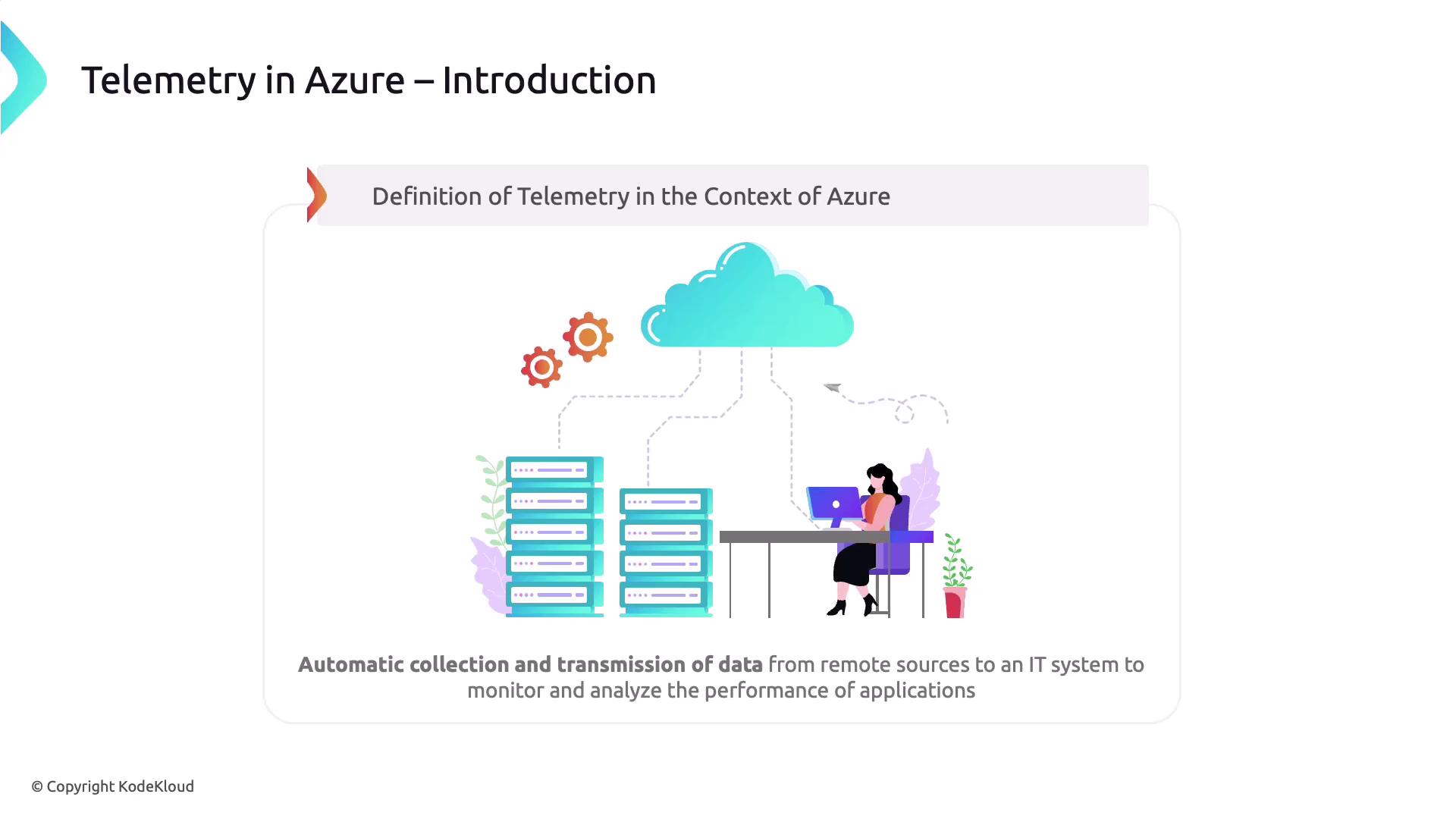
Why Telemetry Matters
Implementing comprehensive telemetry in a cloud environment helps you:
- Maintain real-time visibility and avoid “flying blind”
- Proactively surface and resolve anomalies
- Optimize resource utilization and control costs
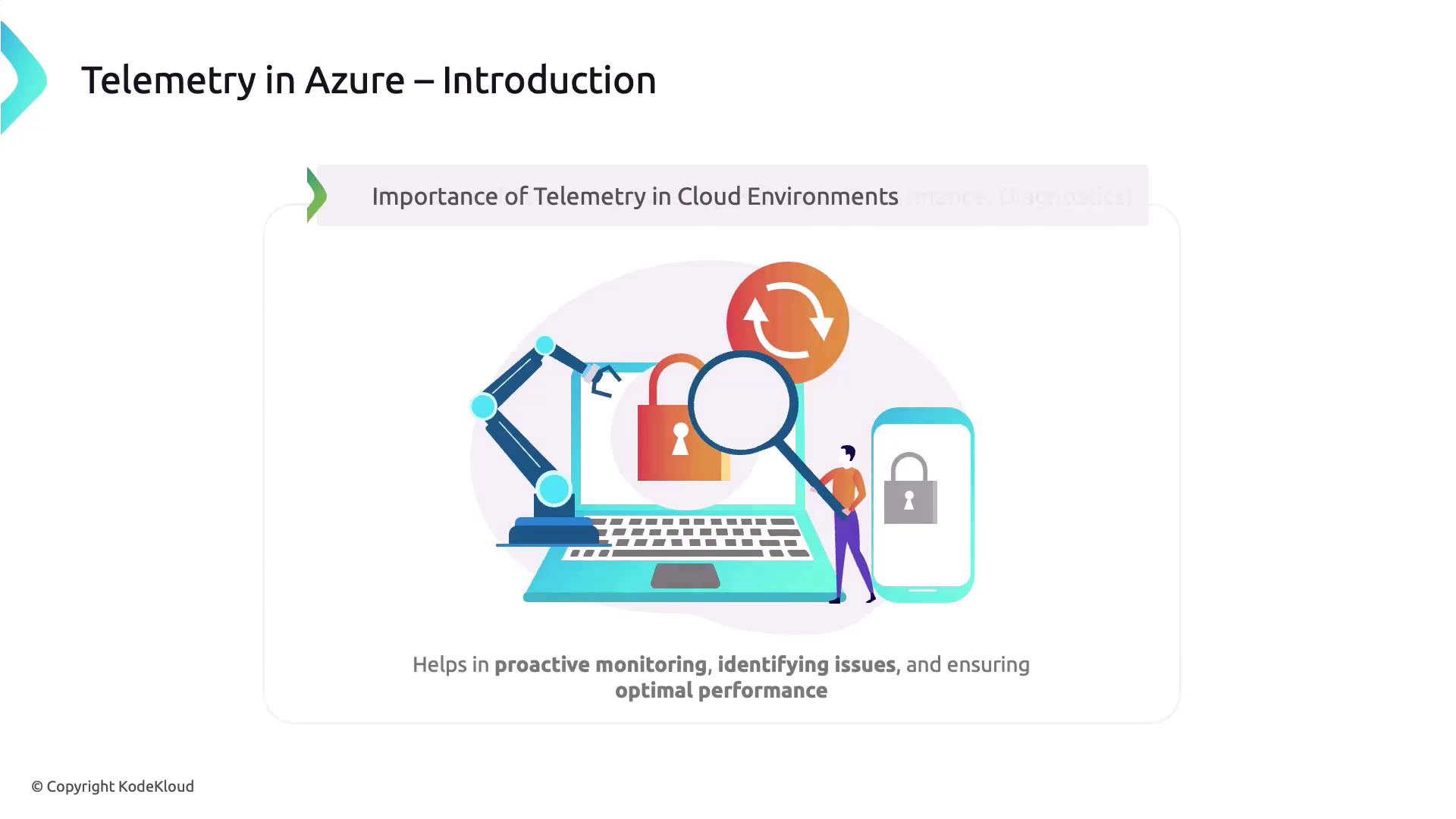
Types of Telemetry Data
Azure captures three primary telemetry categories:
| Telemetry Type | Description | Typical Use Case |
|---|---|---|
| Usage Metrics | User sessions, feature adoption, page views | Analyze user behavior and trends |
| Performance Metrics | Response times, throughput, CPU/memory utilization | Detect performance bottlenecks |
| Diagnostic Data | Error logs, traces, exception details | Troubleshoot failures and root causes |

Key Azure Services for Telemetry
Azure provides three core services to collect and analyze telemetry:
| Service Name | Focus Area | Primary Tooling |
|---|---|---|
| Azure Monitor | Centralized metrics and logs | Metrics Explorer, Alerts |
| Application Insights | Application performance | SDKs, Live Metrics, End-to-End Trace |
| Log Analytics Workspace | Advanced log aggregation and KQL | Kusto Query Language |
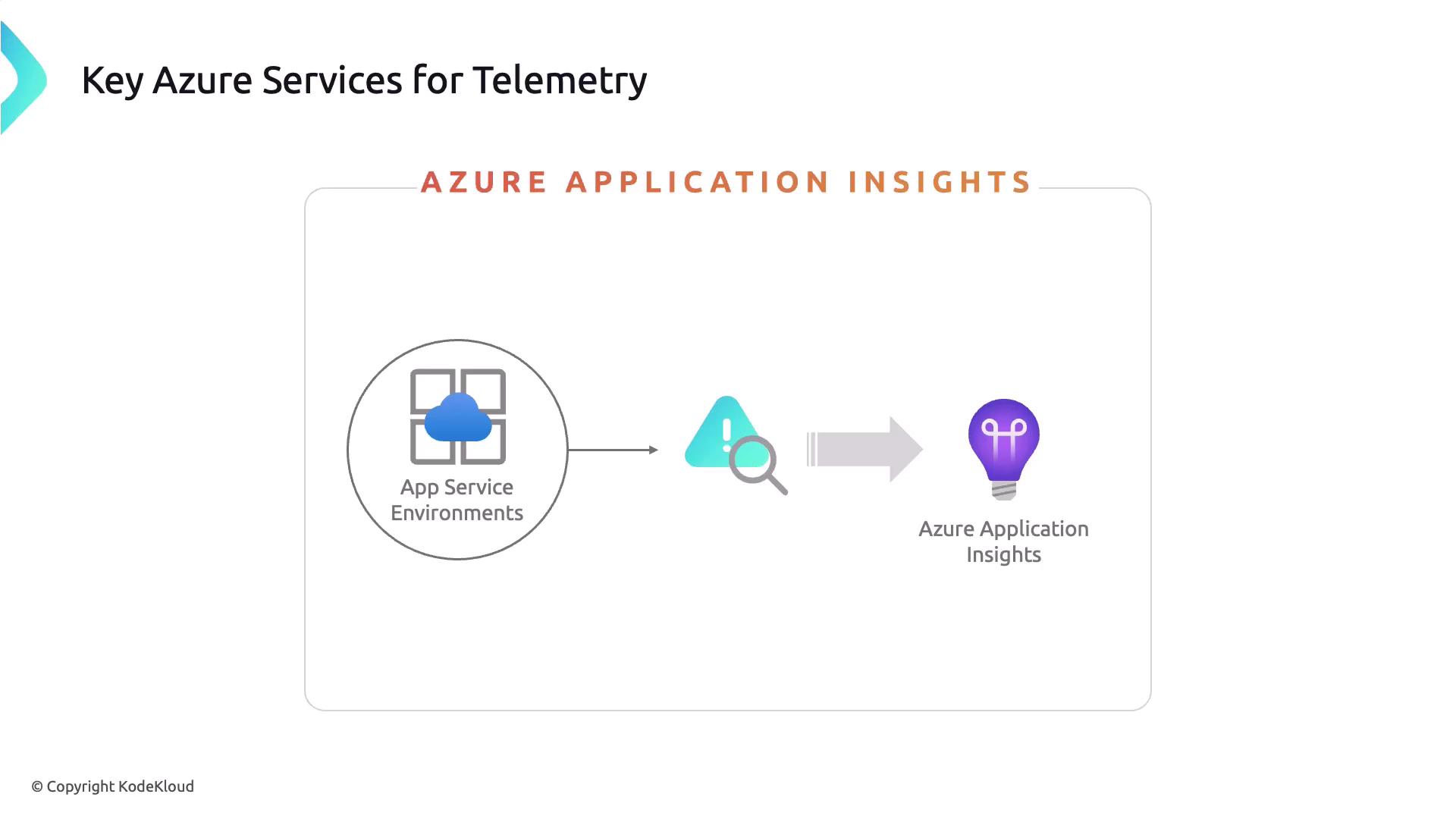
Setting Up Azure Monitor
Follow these steps to onboard resources into Azure Monitor:
- Enable Azure Monitor in the Azure Portal under Monitor > Overview.
- Add data sources such as Virtual Machines, App Services, and Containers.
- Install agents and extensions on VMs or AKS clusters to stream logs and metrics.
- Route data to Log Analytics workspaces, Storage accounts, or Event Hubs.
Note
You need Owner or Contributor permissions on the target resource to deploy monitoring agents.
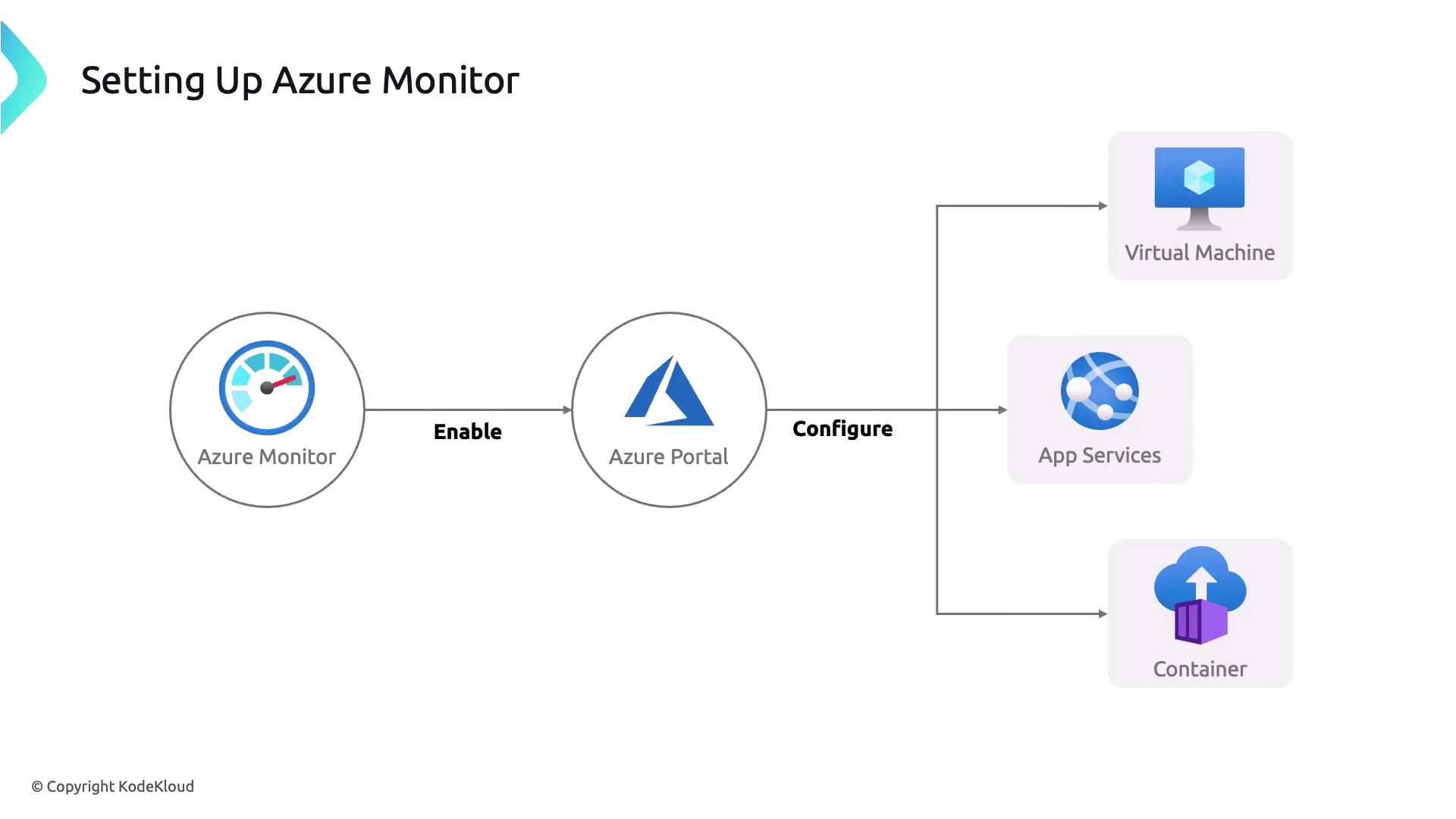
Data from agents can be ingested into Azure Data Lake Storage, Log Analytics, or custom endpoints for deeper analytics.
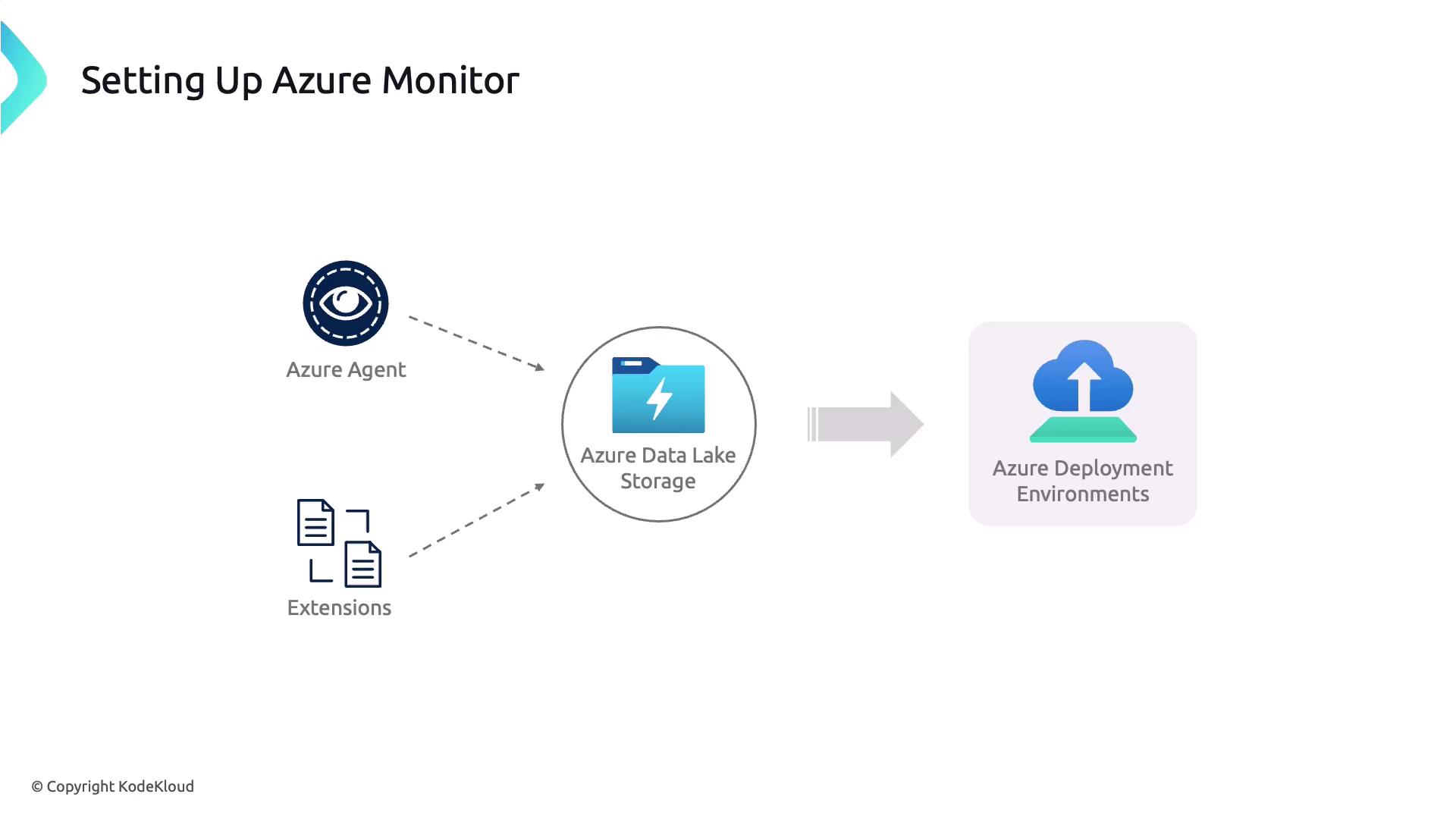
Key features include custom dashboards, actionable alerts, and integration with DevOps pipelines.
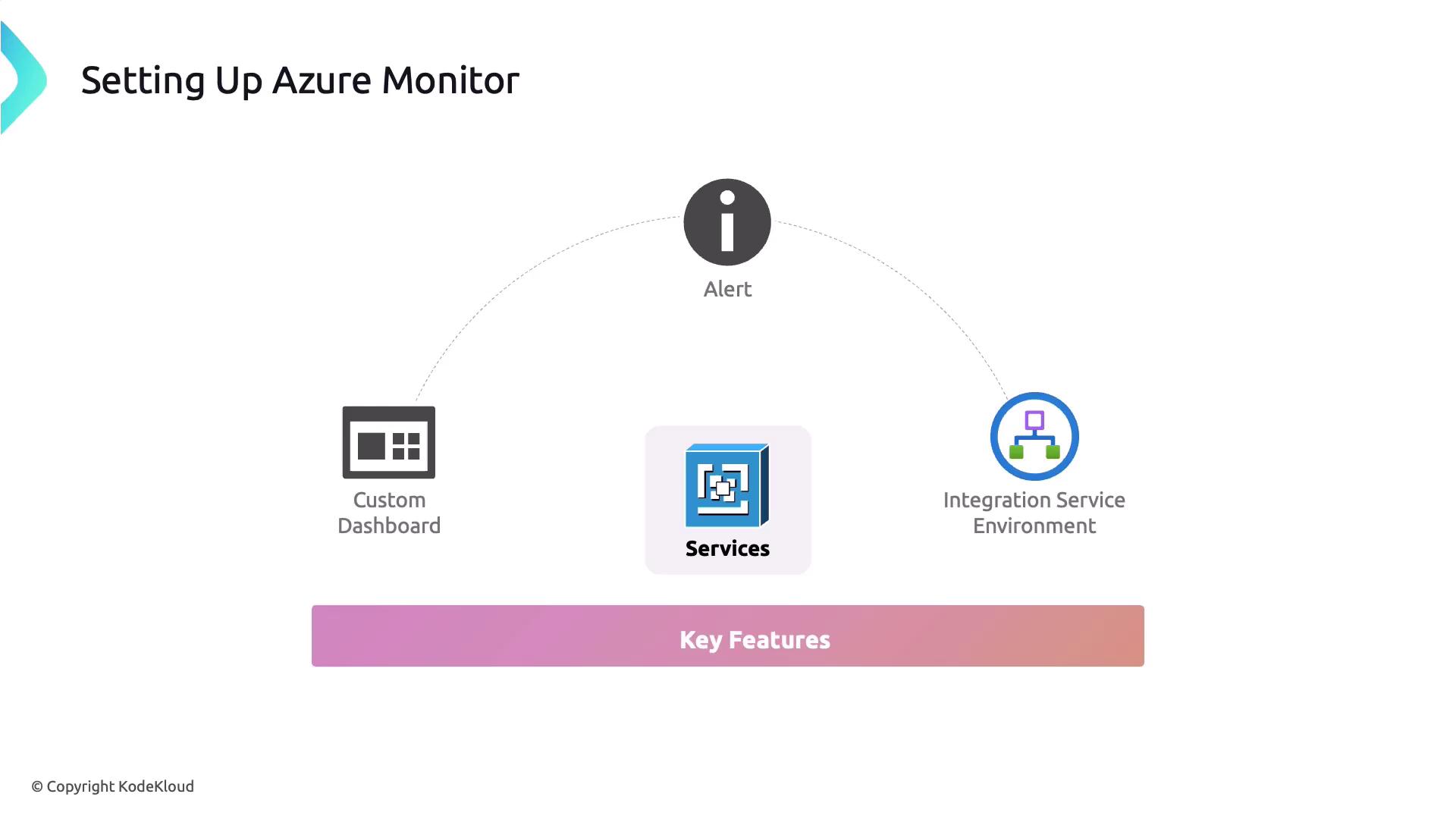
Integrating Azure Application Insights
Add Application Insights to web apps and services via SDKs or the Azure Portal:
- Install the language-specific SDK (e.g., .NET, Java, Node.js).
- Configure instrumentation keys or connection strings.
- Enable auto-collection for HTTP requests, dependencies, and exceptions.
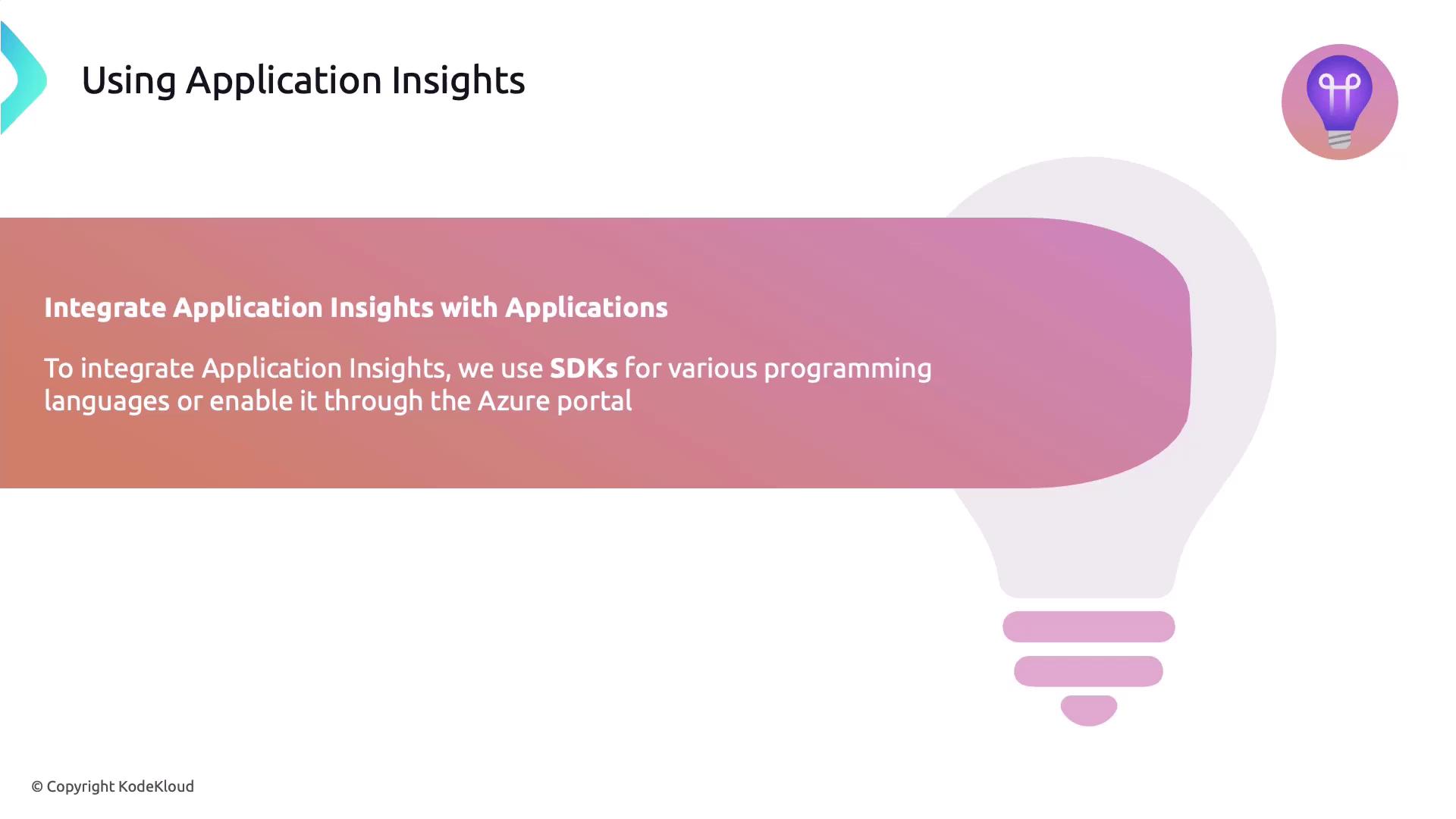
Application Insights captures rich metrics:
| Metric Type | Description |
|---|---|
| Request Rates | Number of incoming HTTP requests |
| Response Times | Latency per request and percentiles |
| Failure Rates | HTTP 4xx/5xx, dependency errors |
| Dependency Calls | Outbound service and database responses |
| User Analytics | Session counts, page views, feature use |

By combining real-time and historical data, you can quickly identify anomalies and track long-term performance trends.
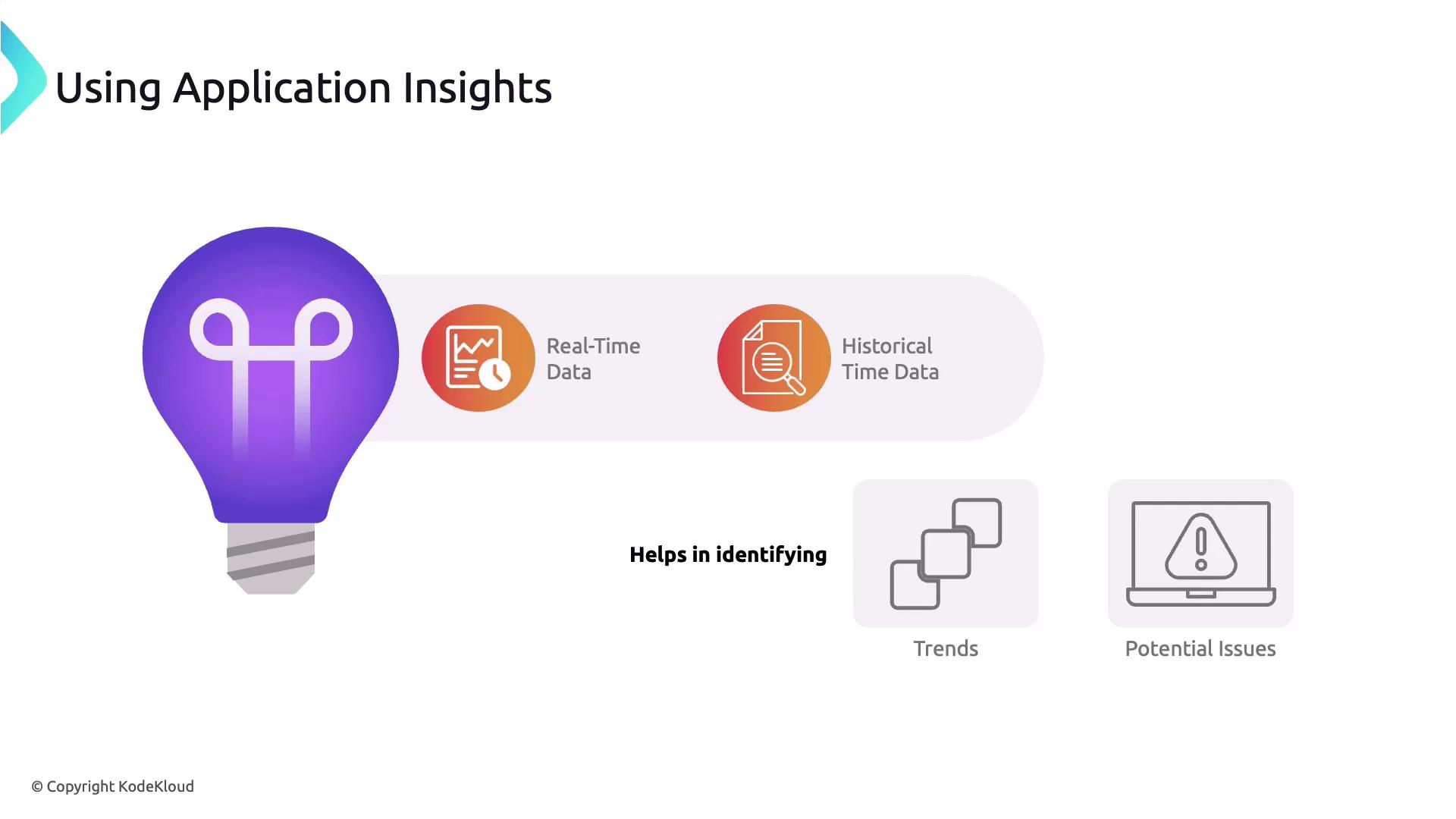
Working with Azure Log Analytics
A Log Analytics workspace centralizes log data from Azure services, on-premises systems, and custom apps. Use the Kusto Query Language (KQL) to filter, aggregate, and visualize logs.
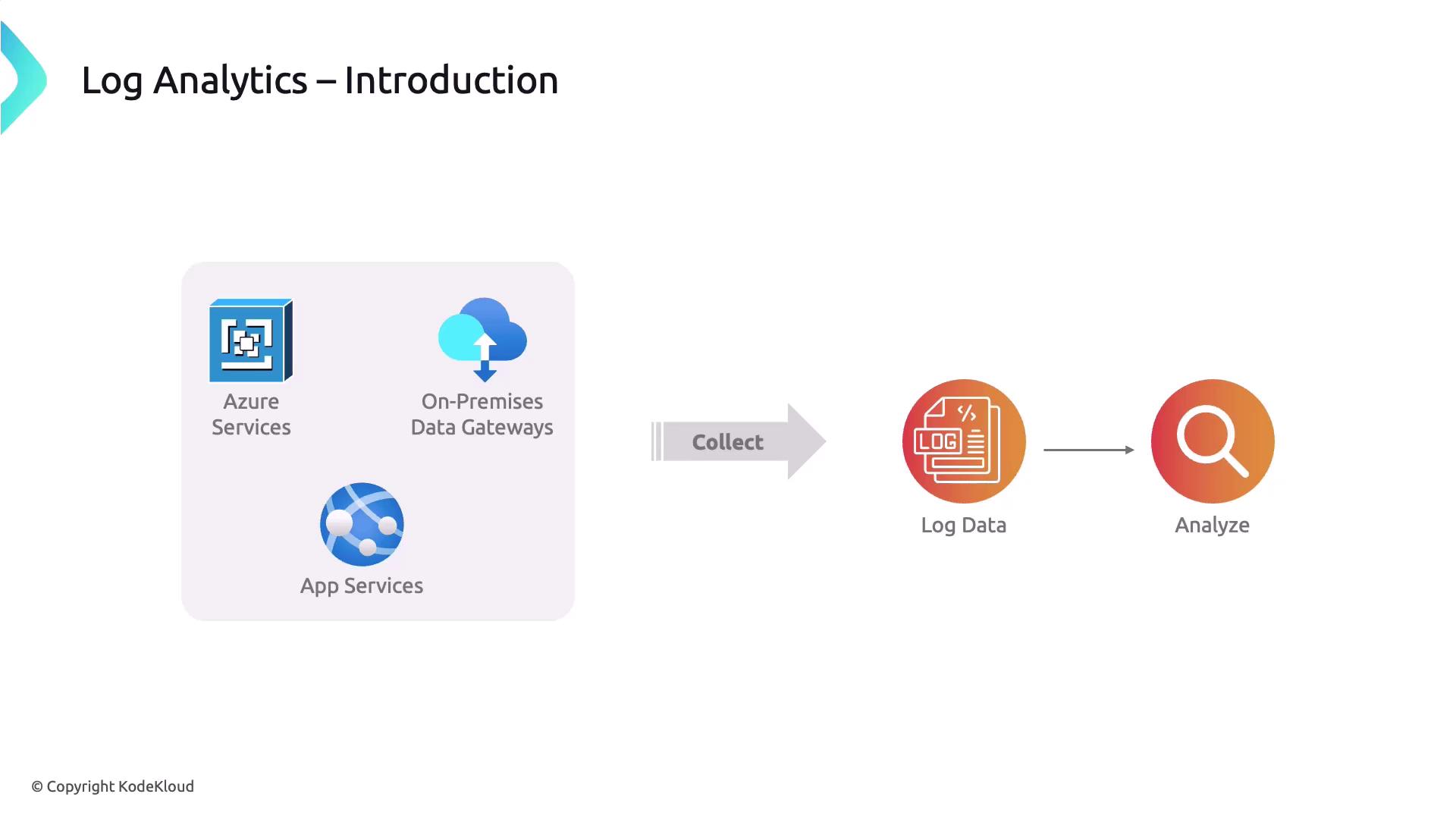
Key capabilities include log retention, cross-resource queries, and custom alerts.
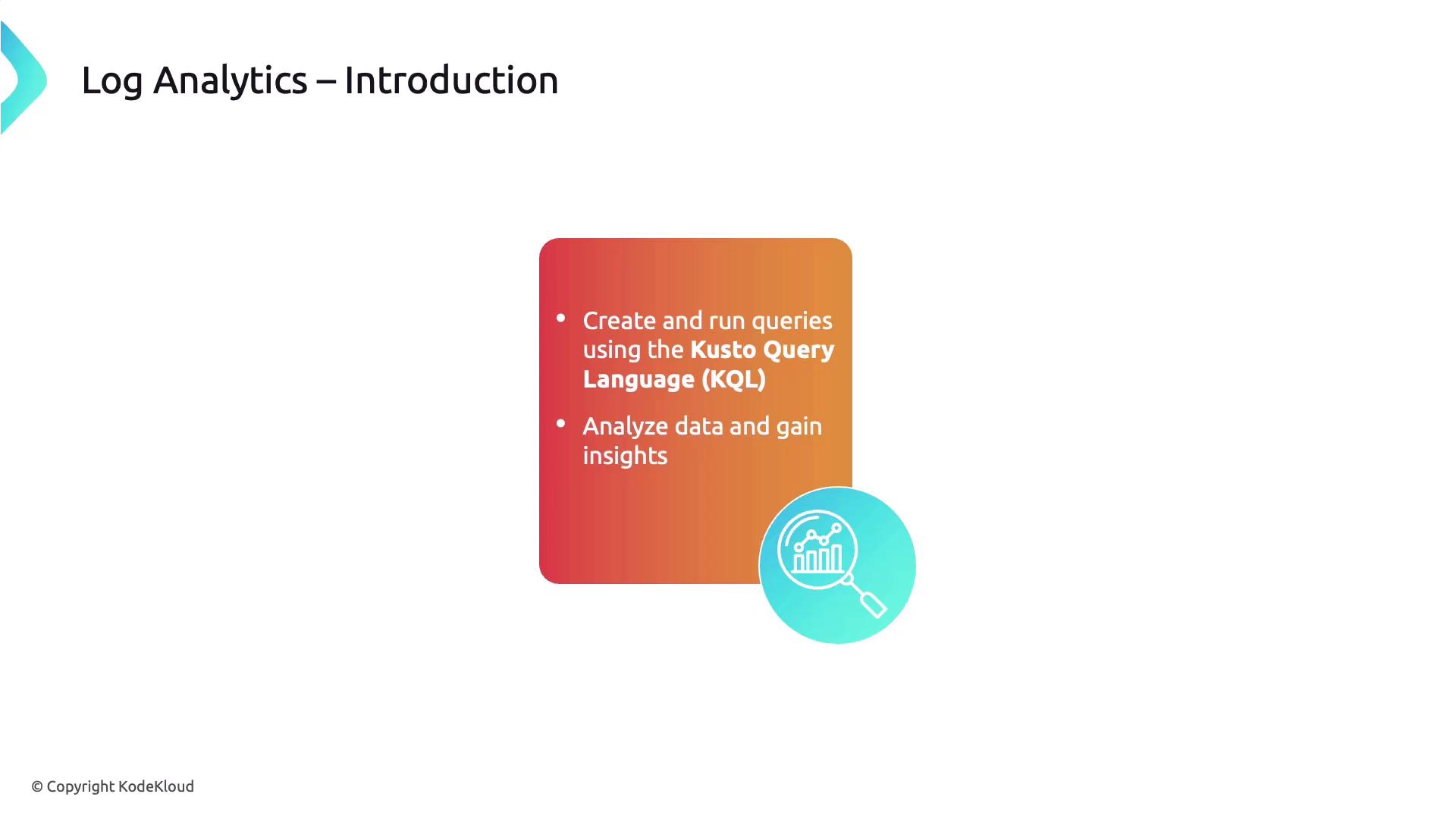
Note
KQL supports time-series analysis, joins, and machine learning plugins for advanced insights.
Configuring Alerts and Notifications
Set up alert rules to act on critical conditions:
| Alert Type | Trigger Condition | Action Examples |
|---|---|---|
| Metric Alerts | CPU > 80% for 5 minutes | Email, SMS, webhook |
| Log Alerts | Error count > 10 in 15 minutes | Logic Apps, Function invocation |
| Activity Log Alerts | Resource group updates | ITSM ticket creation |
- Action Groups define recipients and channels (email, SMS, Teams, webhooks).
- Alert Suppression prevents noisy notifications.
- Tune thresholds based on historical baselines for accuracy.
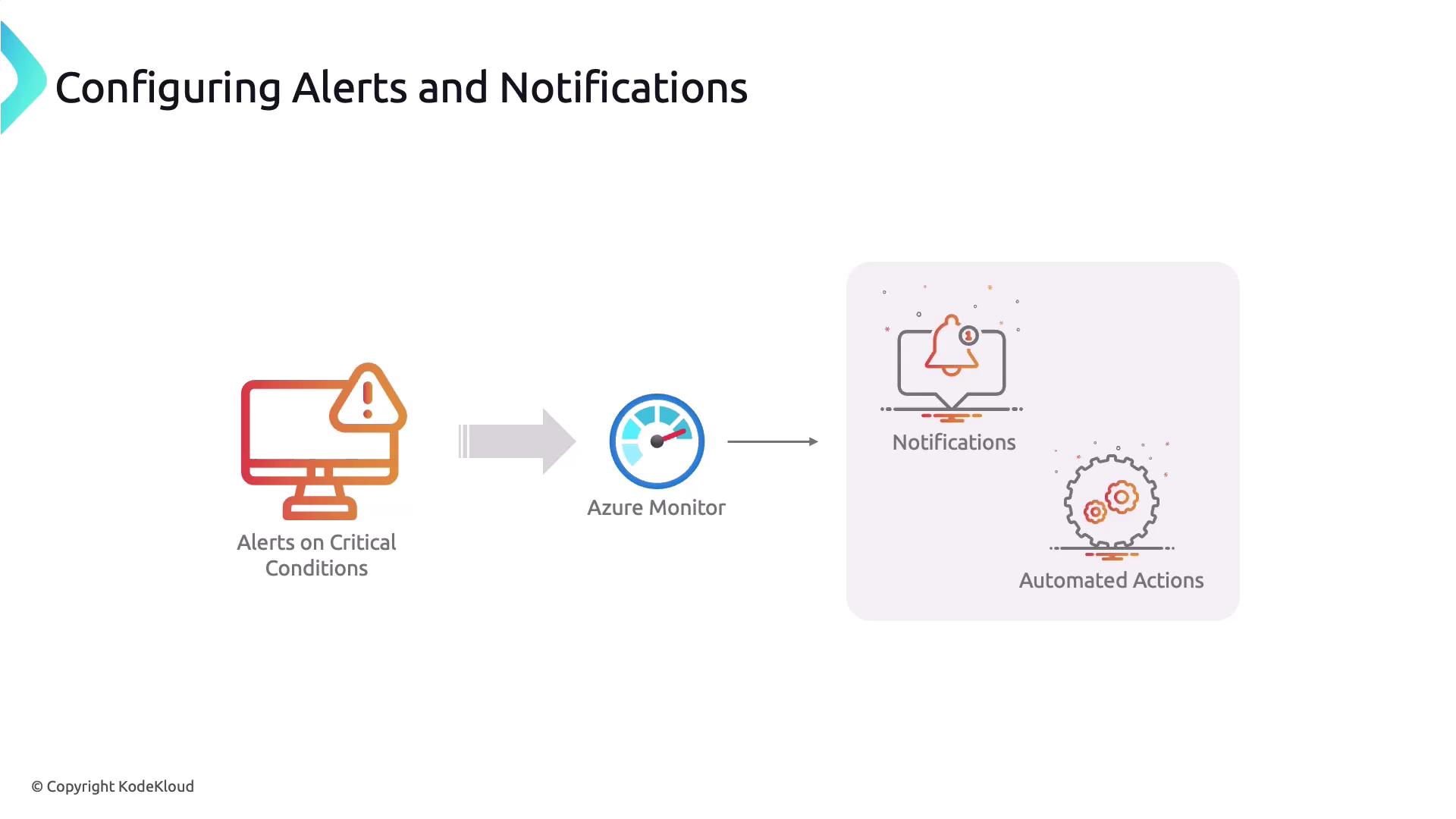

Monitoring Application Performance
Track these KPIs to ensure your app meets SLAs:
- Response Time: Average and percentile latencies
- Error Rate: Failed requests per thousand
- Resource Utilization: CPU, memory, disk I/O
- Throughput: Requests per second
Use Application Insights charts and Workbooks to visualize trends and drill into anomalies.
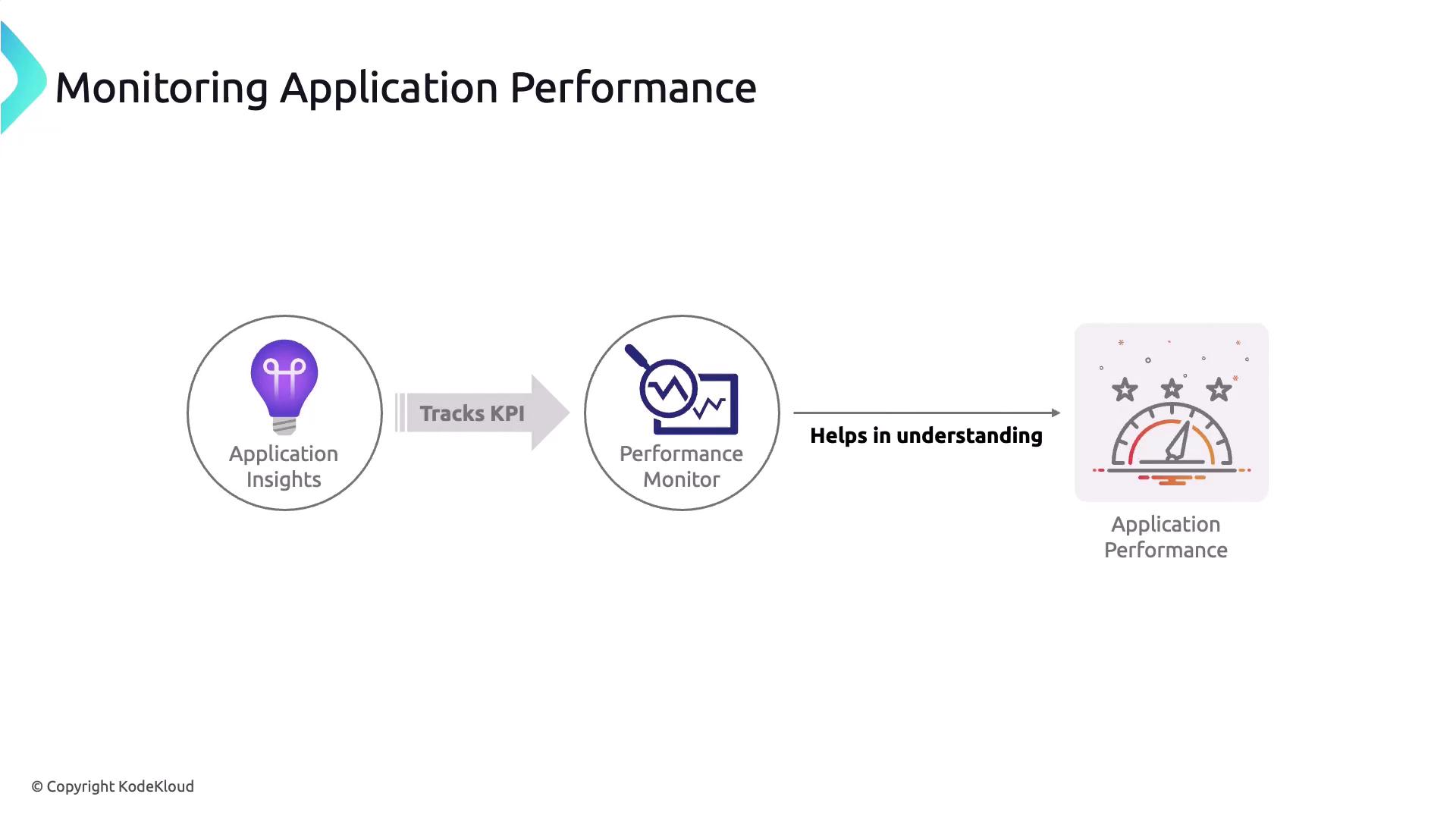
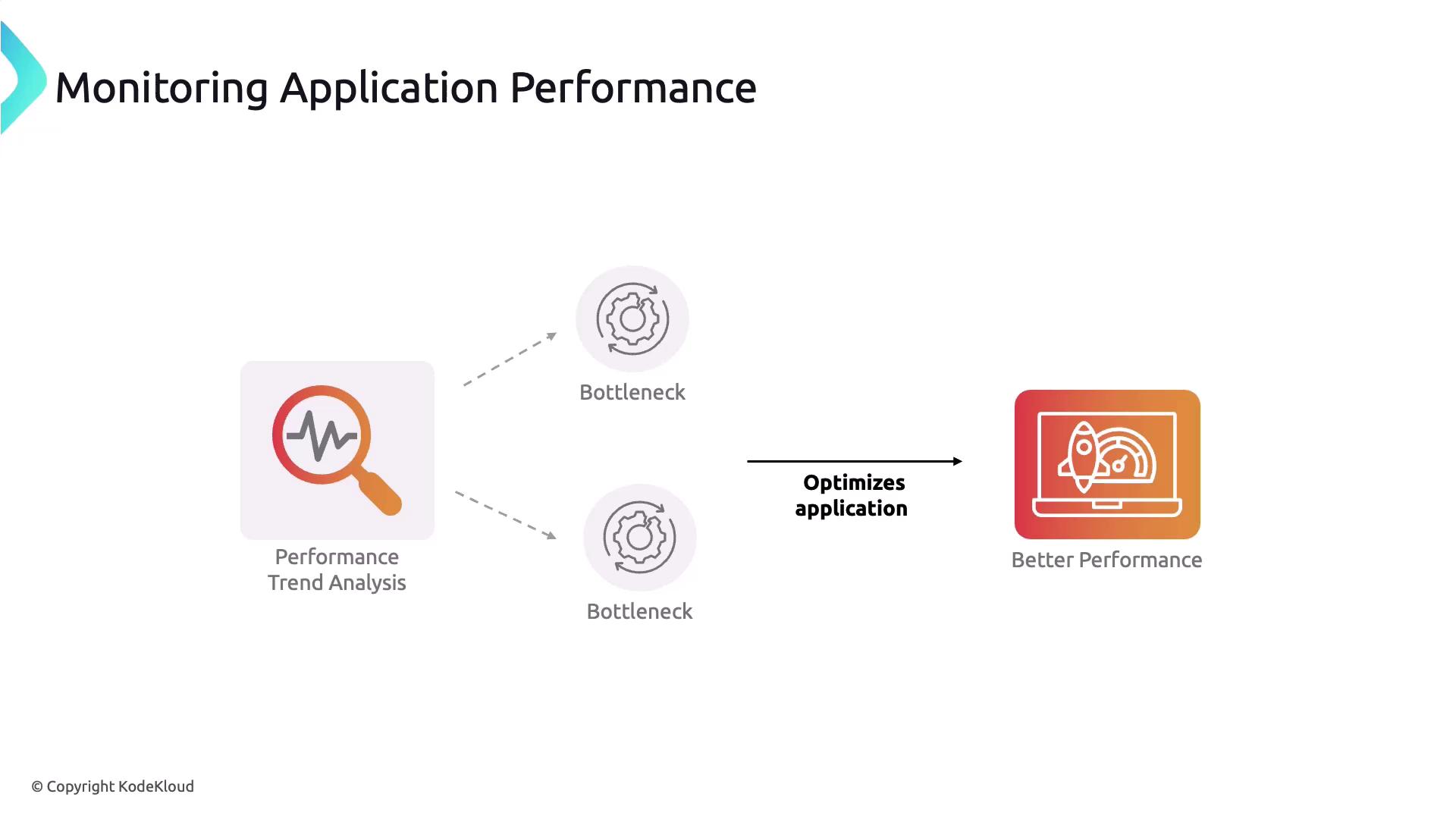
Analyzing Usage Metrics
Usage telemetry helps you understand user engagement:
- Sessions: Active users over time
- Page Views: Feature popularity
- Events: Customized tracking for critical workflows
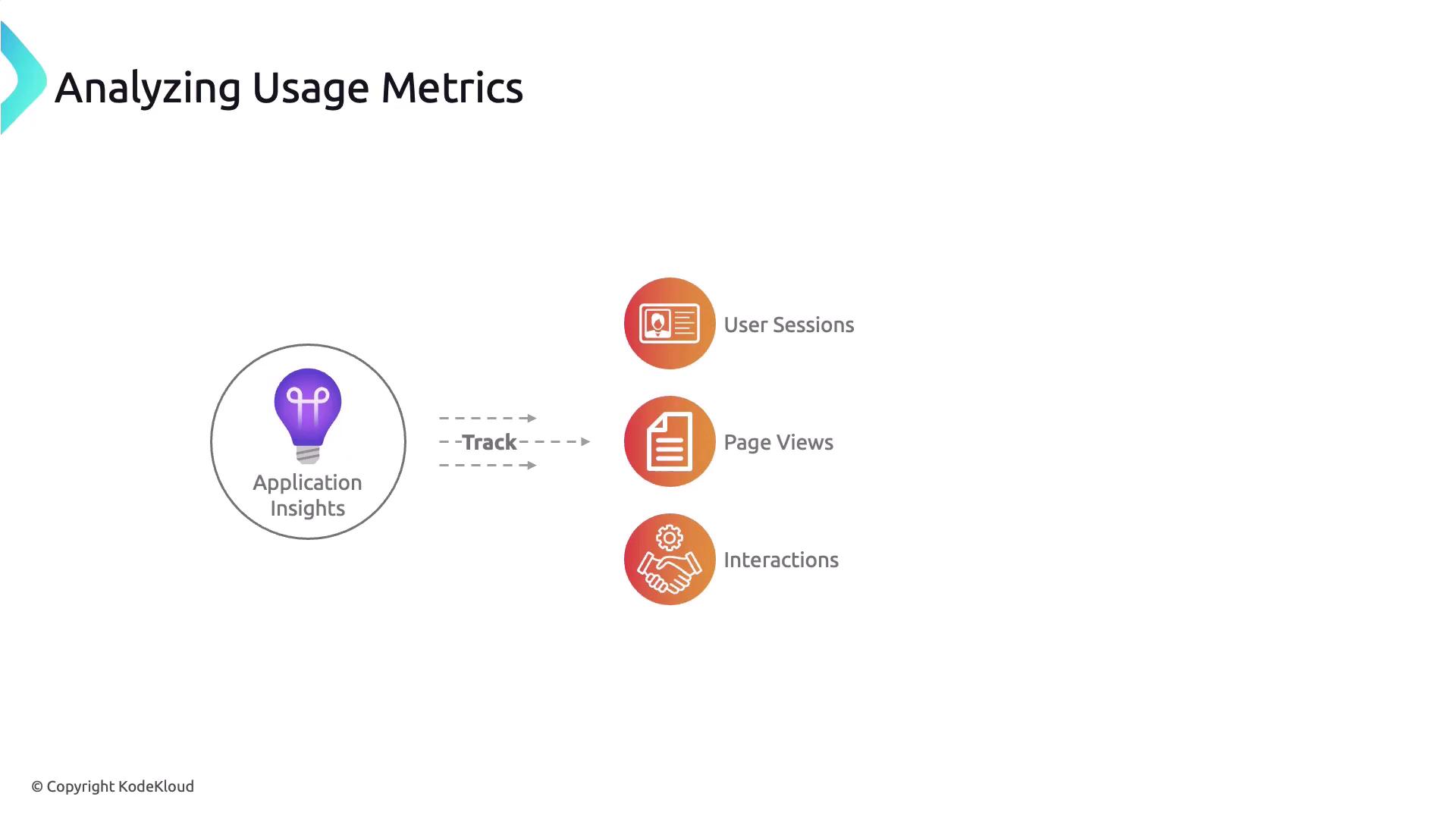
Leverage these insights to refine features and prioritize development effort.
Diagnostic Data and Troubleshooting
Collect detailed traces, activity logs, and exception reports to perform root-cause analysis:
- Correlation IDs to tie together distributed requests
- Trace logs for step-by-step execution flows
- Exception details for stack traces and error codes
Warning
Insufficient logging can slow down troubleshooting. Ensure critical paths emit structured logs and correlation IDs.
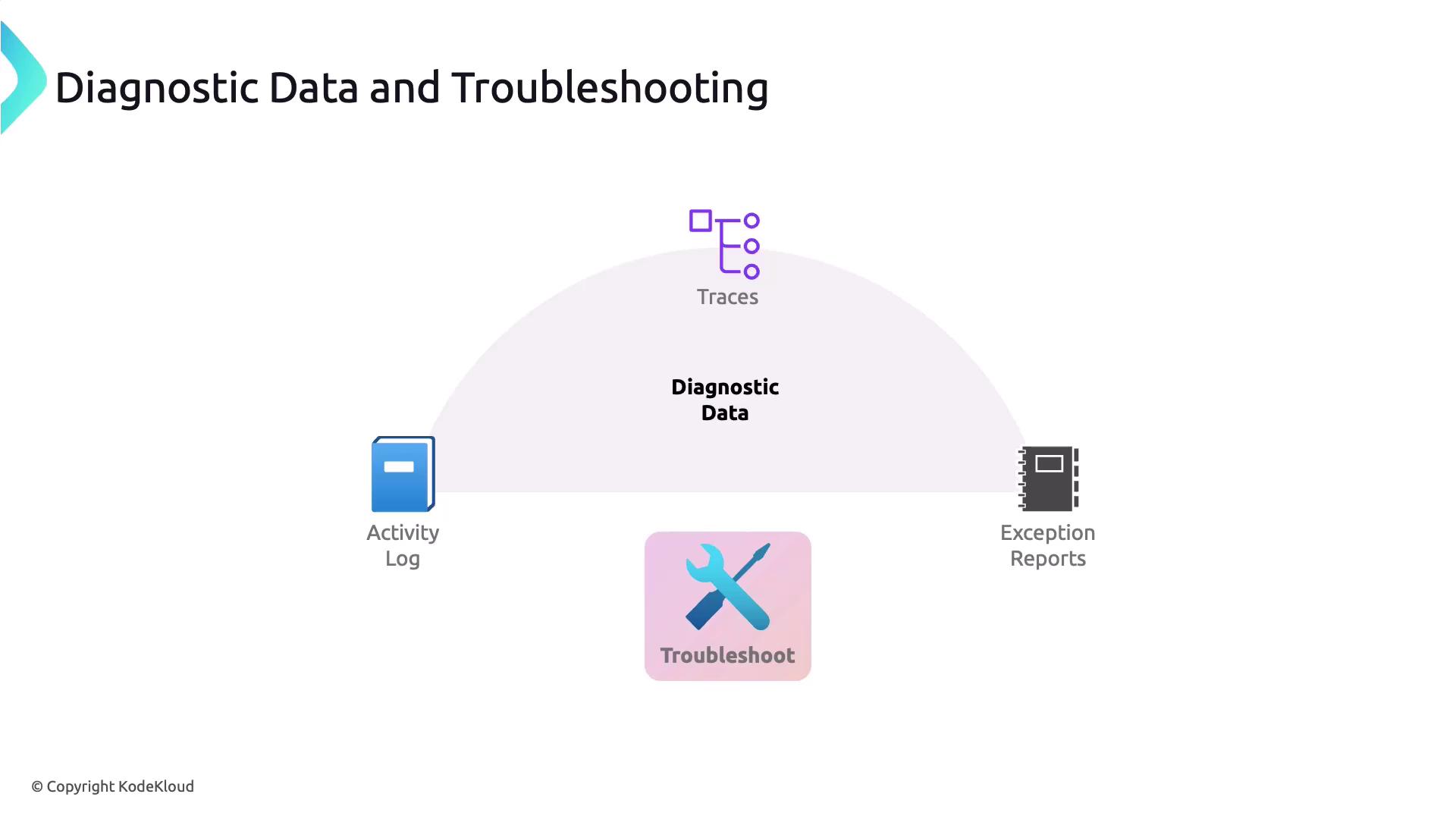
Creating Custom Dashboards
Build real-time, shareable dashboards in Azure Monitor:
- Add tiles for metrics, logs, and charts.
- Pin Workbooks visualizations from Application Insights.
- Share with teams or embed in SharePoint.
This centralized view fosters collaboration and rapid incident response.

Best Practices for Azure Telemetry
- Comprehensive Coverage: Monitor all mission-critical services.
- Alert Tuning: Adjust thresholds based on load patterns.
- Regular Reviews: Update dashboards and rules as your architecture evolves.
- Data Retention: Balance retention periods with cost and compliance.
- Actionable Insights: Use telemetry to inform capacity planning and feature roadmaps.
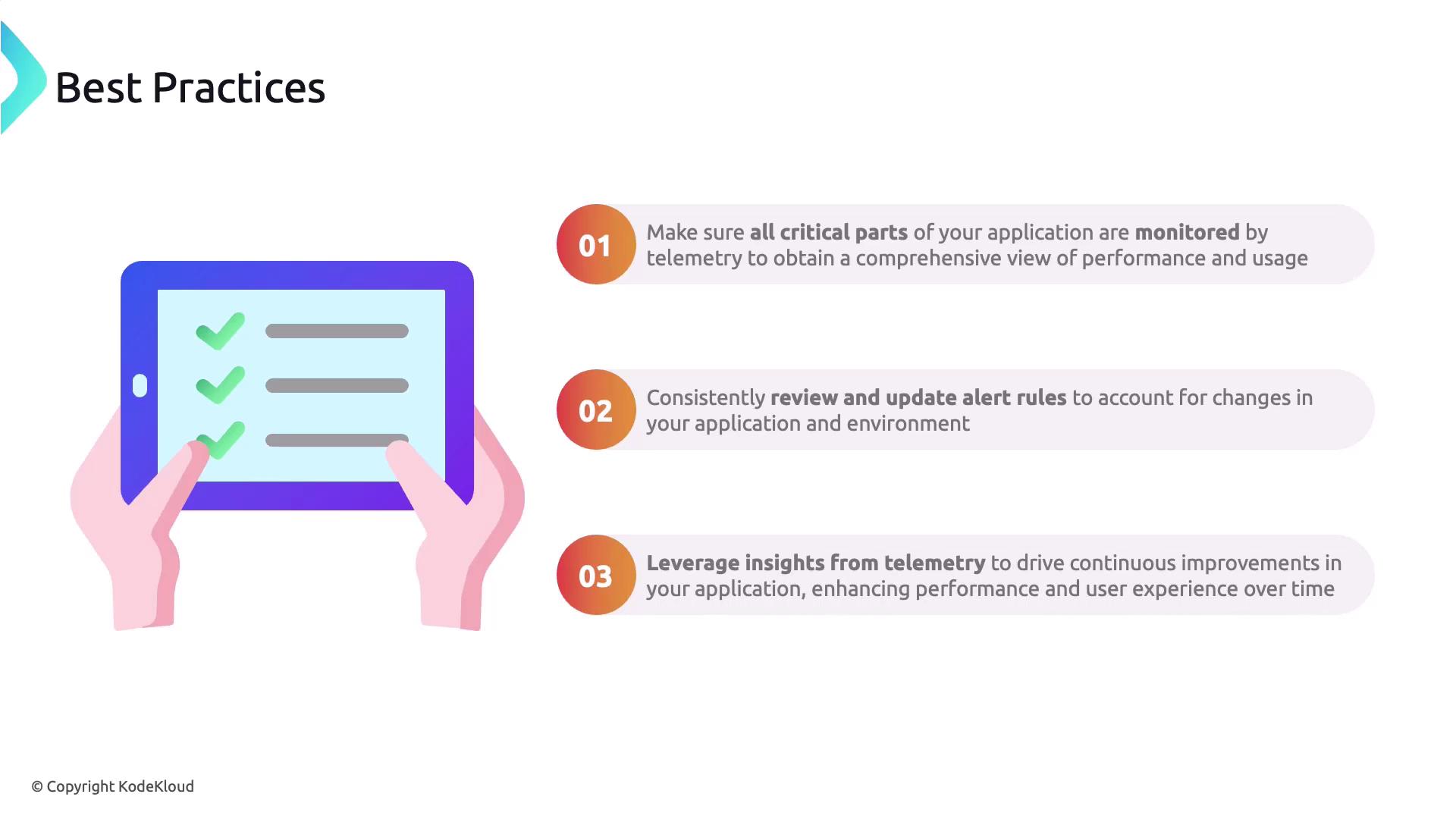
By continually refining your telemetry strategy, you’ll ensure high availability, performance, and user satisfaction for your Azure applications.
References
- Azure Monitor Documentation
- Application Insights Overview
- Kusto Query Language (KQL) Guide
- AZ-400: Designing and Implementing Microsoft DevOps Solutions
Watch Video
Watch video content